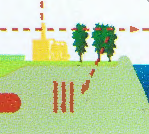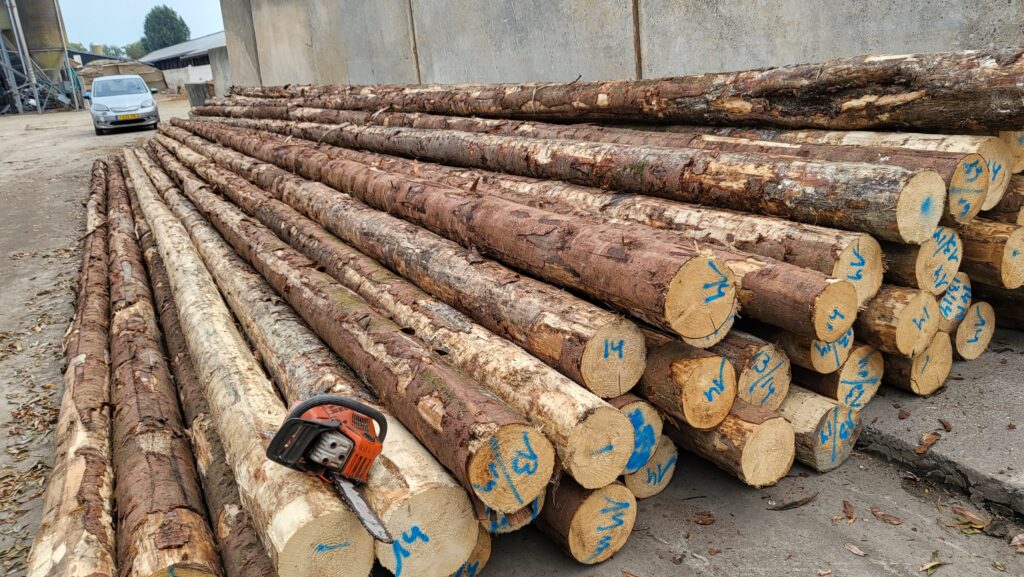

A Thermostat for the Planet
One of the biggest and densest underground forest in the world was planted more than 500 years ago under the historic center of Amsterdam. The Palace on the Dam alone, the former Amsterdam City Hall, was built on 13,863 wooden poles, an average of two and a half per square meter. That was necessary because the soggy delta soil is saturated with water for the first twenty or so meters. Anything you build on the solid skin would just sink into the porridge underneath. Pile driving has been practiced since the 12th century. It wasn’t till 1940 that the country changed from wood to concrete.
The piles below the Paleis op de Dam are only in the places where they are needed for construction. So it should be feasible to drive four wooden poles per square meter. As long as the top stays below the level of groundwater, the piles will store their carbon safely for centuries. Consequently, this technique qualifies for the highest rating of Carbon Dioxide Removal (CDR). Pile driving is a proven technique that scares no one.
On one hectare you can drive up to 40,000 poles which captures the equivalent of over 20,000 tons of CO2. The volume of the saturated mass underneath will increase with 20%. There will be a horizontal displacement of the mud, but the top soil will also be pushed upwards to increase the ground level of the area. As many of the saturated areas of the country suffer from ground level decline as a result of water extraction, that is a bonus correction to compensate the rising sea level.
The poles will be of low grade fir wood that doesn’t compete with the high end material that is used for building in wood above the surface. As the tops of the poles have to be well below the groundwater level for preservation, they will need concrete top-ups that will be placed where the construction needs it and these will disperse the pressure over the density of the forest below. If you use olivine concrete to build these extensions and put a wooden building on top, you’ll get the best score for a negative emission project.
The Netherlands needs to build a million new homes over the coming decades. For that at least 20,000 hectares of new building ground is needed. Considering the buildup of the delta, at least 10,000 ha of this surface will need a twelve to twenty meter foundation. Using this method to create a solid foundation, the CDR will result in 200 megatons of captured CO2. Though pile driving is usually a custom job, for this purpose we may develop a robotized procedure to punch four holes and drive in the piles for every square meter. And as we have time, the robots run on sun and wind.
The Underground Forest will stay there for at least the next five hundred years. So with a changing use of the land, the foundation can simply be reused. We have now chosen to combine it with constructing buildings or other infrastructure on top to make it economically more feasible, but you may also plant a new forest on top or use it for agriculture. By the way, the new forest on top, when fully grown, will only store one sixteenth of the forest underneath. I am now preparing a test site of one hectare and I’m fine tuning the underground dynamics. What is still missing, is a deep understanding of the market for the wood that we need for this venture.
STOP BURNING BIOMASS - 1998
In 1998, on a European conference on Biomass for Energy and Industry I presented a paper on climate control. My take was that for every atom of fossil carbon that was released into the carbon cycle at the surface of the earth, one carbon atom should be permanently removed. One of the proposals was to sustainably grow forests and store the harvest in anaerobic conditions in clay and peat soils. More than 25 years later, this is finally a feasible option to create a thermostat for the planet.
This is diagram 11 of a 12 diagram visualization that Yvo Zijlstra drew in 1998 to illustrate my pleas to stop burning biomass for energy and use it for climate control instead. See the whole presentation here.



